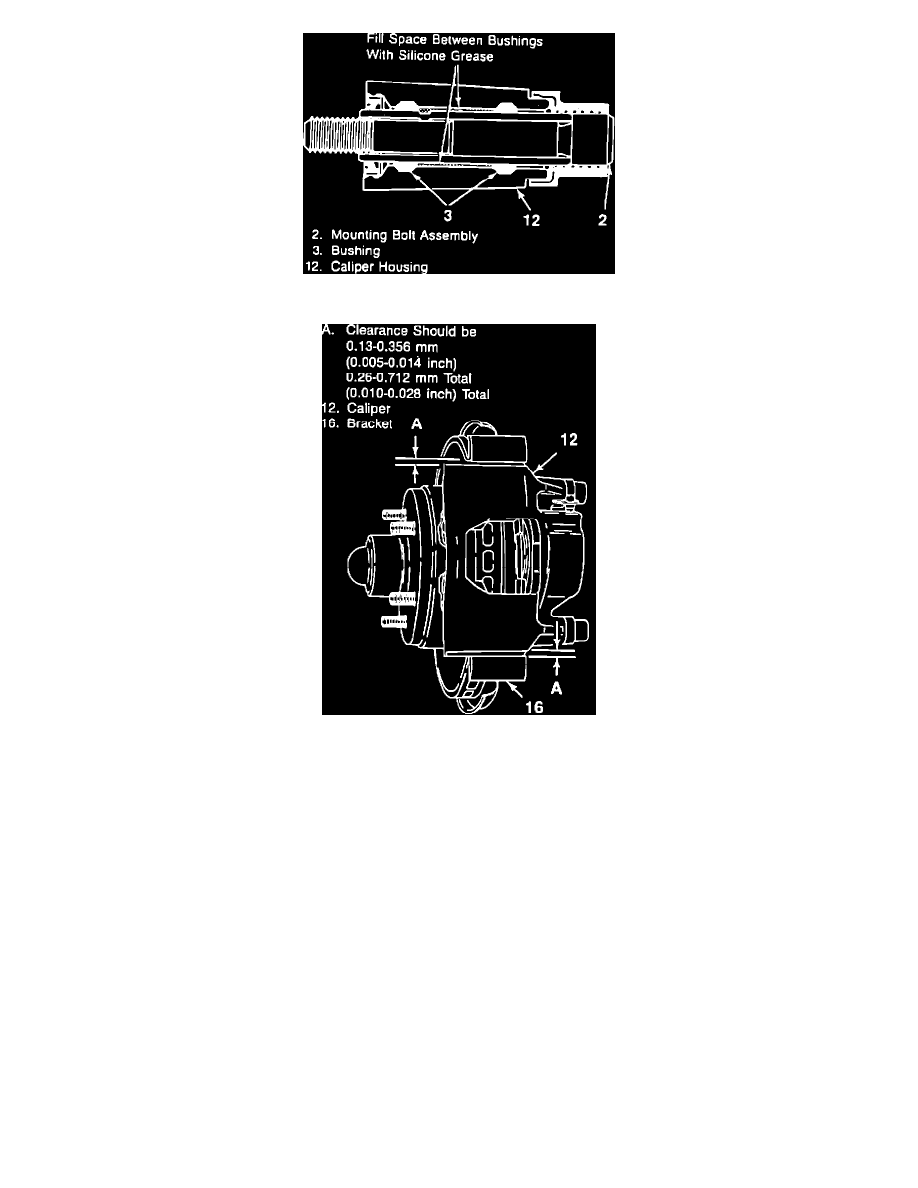C 1500 Truck 2WD V8-350 5.7L (1989)

Figure 3 - Lubricating the Caliper Cavity
Figure 4 - Caliper to Bracket Clearance
When brake rotors are refinished, or whenever brake calipers are removed to service brake components, the calipers should be inspected. Check caliper
mounting bolt and sleeve assemblies for corrosion and replace if corrosion is found. When reinstalling the caliper liberally fill both cavities between the
bushings in the housing with silicone grease (see Figure 3). Once reinstalled, the clearance between the caliper and the bracket should be checked. If
necessary, remove the caliper and file the ends of the bracket stops to obtain 0.127 - 0.356 mm/side (0.005 - 0.014 inch/side) or 0.254 - 0.712 mm (0.010
- 0.028 inch) total clearance. (Measure clearances individually and then together (see Figure 4).
Brake Burnish Procedure:
Whenever rotors are refinished and/or braked pads are replaced the following brake burnishing procedure must be used to ensure proper initial "break
in" of components.
On a dry clean level roadway, make twelve stops using the following procedure:
First Stop:
Stop vehicle from 40 mph by applying the brakes to achieve a deceleration rate of 10 ft./ sec./sec. (A 10 ft./sec./sec deceleration is equivalent to stopping
the vehicle from 40 mph in 6 seconds.)
Second through Eleventh Stops:
Stop vehicle from 50 mph by applying the brakes to achieve a deceleration rate of 15 ft./ sec./sec. (A 15 ft./sec./sec deceleration is equivalent to stopping
the vehicle from 50 mph in 5 seconds.)
Twelfth Stop:
Stop vehicle from 40 mph by applying the brakes to achieve a deceleration rate of 10 ft./ sec./sec.
